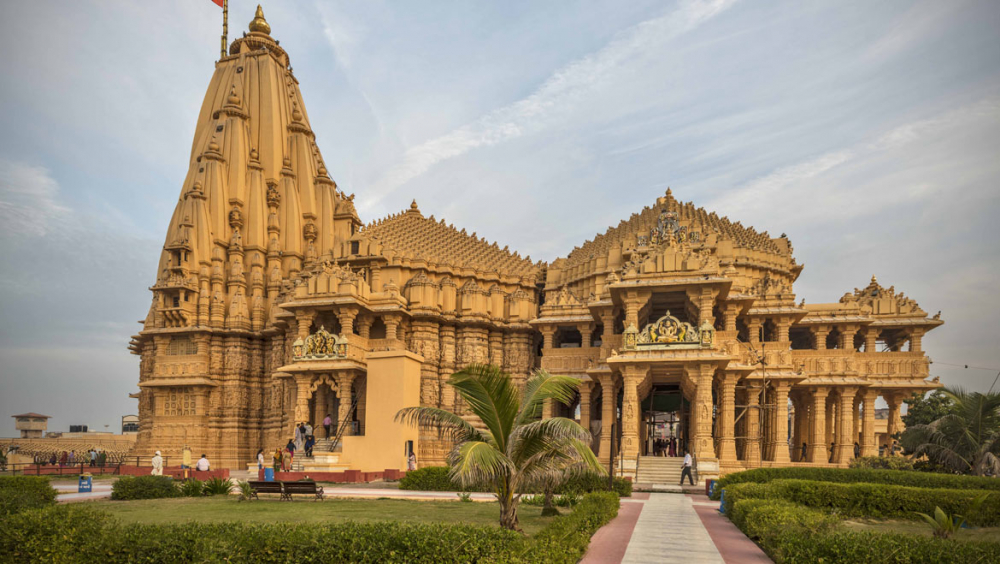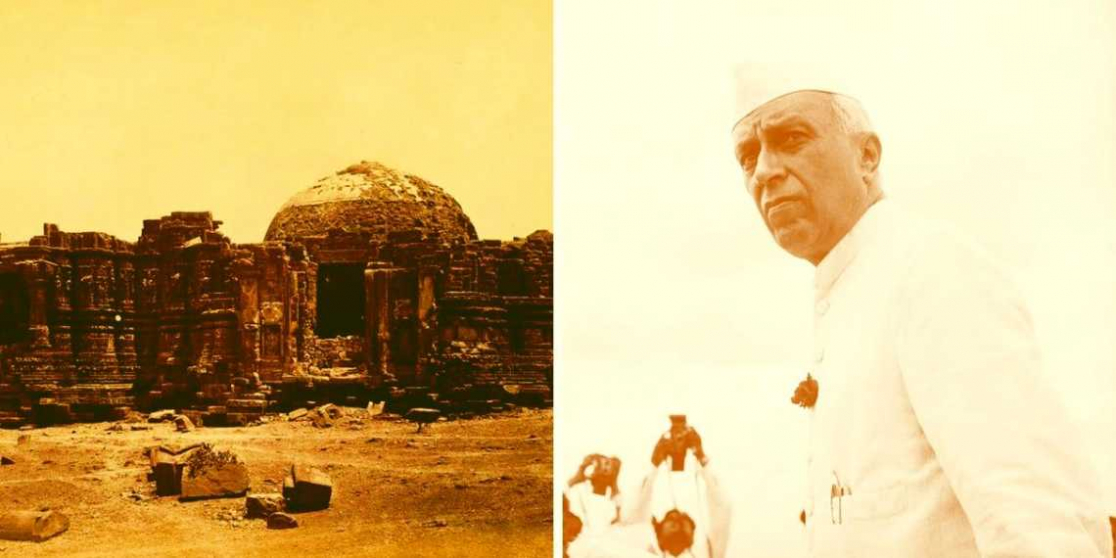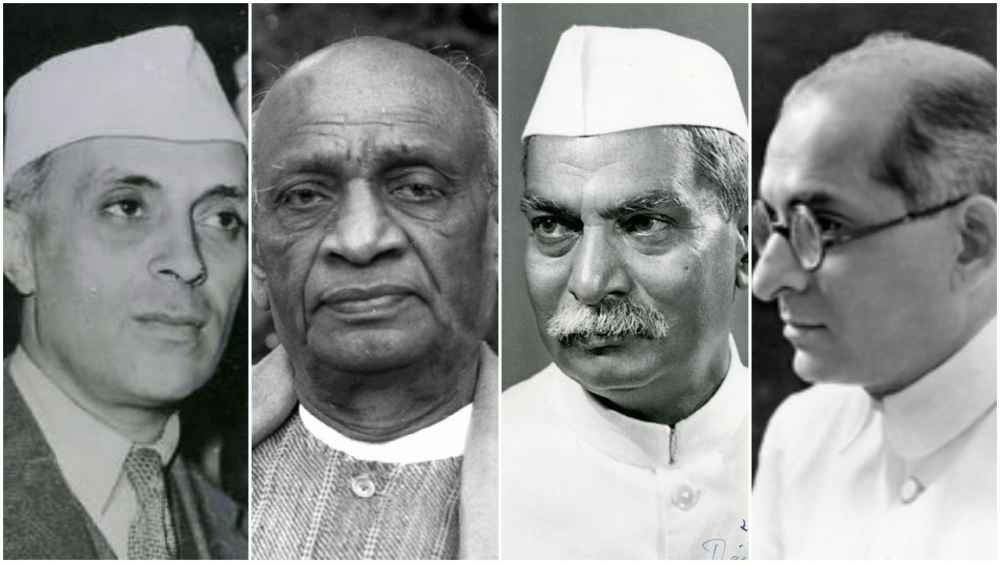
"In India, religions are coloured with the colour of politics. - Birahi Badal"
![]() he Somnath Temple in Gujarat is a magnanimous piece of architecture and has been of a peculiar interest, since time immemorial, to historians and politicians alike. Situated in Prabhas Patan near Veraval in Saurashtra on the western coast of Gujarat, the temple is believed to be the first among the twelve jyotirlinga shrines of Shiva.Legend says that the moon god used to worship this Shivling.And hence the name Somnath, named after the moon deity himself, Soma.
he Somnath Temple in Gujarat is a magnanimous piece of architecture and has been of a peculiar interest, since time immemorial, to historians and politicians alike. Situated in Prabhas Patan near Veraval in Saurashtra on the western coast of Gujarat, the temple is believed to be the first among the twelve jyotirlinga shrines of Shiva.Legend says that the moon god used to worship this Shivling.And hence the name Somnath, named after the moon deity himself, Soma.

Somnath Temple, named after the moon god himself, Soma
Now here’s an interesting trivia: The Somnath Temple is said to have been looted and destroyed for almost 17 times!! And if that’s not surprising enough, then here’s another fact: It was rebuilt every time after it was plundered. Now that demands some serious looking into the matter and cause of its high interest amongst raiders, conquerors, and dacoits.
But that’s not why I’m writing this article. What I’m about to discuss here is something that’s known only to a small section of our population. Something that has been lost in the sands of time. An event that’ll make you see our leaders in a whole new light. What I’m about to unfold, is a crumpled, torn, dusty page from the forgotten book of Somnath’s untold history.

Pandit Jawaharlal Nehru was initially against the idea of rebuilding of the Somnath Temple
The event revolves around the very first Prime Minister of free India, Pandit Jawaharlal Nehru. Now something that’s clear by now, is the destruction and rebuilding of Somnath temple from time to time. In 725 CE, Al-Junayd, the Arab governor of Sindh is said to have been the first to destroy the temple as part of his invasions of Gujarat and Rajasthan. And the first person to oppose its reconstruction? Shri Jawaharlal Nehru.
After the partition of 1947, the ruler of Junagadh wanted to abandon his kingdom and move to Pakistan. Fearing this transition might hamper the nation’s security as well as spark off nationwide outrage, the then Deputy Prime Minister, Sardar Vallabhbhai Patel, with the help of the army, took the kingdom under the wings of New India. This was the time when Sardar Patel and K.M. Munshi had expressed a desire for reconstruction of the Somnath Temple, which had laid barren since 1702, after the Mughal Emperor Aurangzeb had ordered for its complete demolition. However, a certain section of the Indian population wasn’t too happy regarding this new progress, which included the Prime Minister himself.
The Somnath Temple was looted, destroyed and rebuild for as much as 17 times
Citing strong Hindu affiliations to the temple, Sardar Patel argued that not only reconstruction was the need of the hour, but also the general public’s demands could only be met through the re-establishment of the Shivling. Regarding these new developments, Shri Jawaharlal Nehru organised many meetings with Mahatma Gandhi, seeking to halt the reconstruction process. Gandhi, however expressed disagreement saying doing so would result in political suicide, but suggested that the funds for the construction should be collected from the public and the temple should not be funded by the state.
With public support and the funds collected, the reconstruction procedure was initiated. However, with the untimely deaths of Mahatma Gandhi and Sardar Patel, the whole responsibility of the rebuilding process fell on K.M. Munshi’s capable shoulders. Meanwhile Jawaharlal Nehru had conveyed his feelings to Munshi, saying the whole idea of the temple’s reconstruction was similar to the resuscitation of the Hindu ideology, which didn’t go down well with K.M. Munshi.

Left to Right: Jawaharlal Nehru, Sardar Vallabhbhai Patel, Rajendra Prasad, K.M. Munshi
Jawaharlal Nehru persuaded President Rajendra Prasad to not grace the inauguration of the newly built Somnath temple. However, all his efforts were in vain. The President delivered an empowering speech which never saw the light of the day, due to Nehru’s strict order to All India Radio (AIR) of never broadcasting it. A small excerpt from the fabled speech goes as follows:
“Faith is prevalent in every person’s heart today, and this faith is more powerful than every power, every armament, every leader and every army in the world. In ancient times, India was the fortress of prosperity, with our gold, silver, and other precious ornaments occupying a place in our mighty temples. I firmly believe that Somnath Temple’s restoration is the resuscitation of that prosperity.”
This event in history discloses a whole new aspect of Shri Jawaharlal Nehru. Maybe his actions had a personal motive, but nonetheless, his futile attempts to stop the Somnath Temple’s revival explores a hidden facet of Nehru’s personality. What is true, what is not, is a question up for debate. And to examine all the facts, one would’ve to go to the depths of the sources. We can either accept them, or stay in the bliss of denial. But as for now, we would have to make do with the history that has been taught to us. A history that has been passed down from generation to generation. A history, which has always been written by the victors.